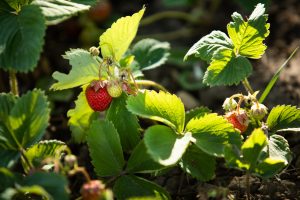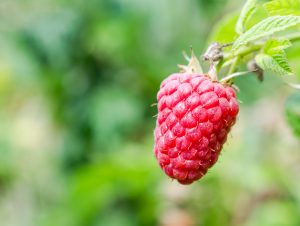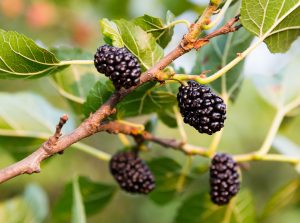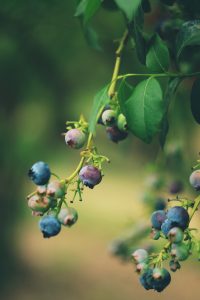It is one of life’s simple pleasures to walk about in your garden in the warmer months and notice rich juicy berries ready for picking. For most, the temptation is too great, and they are consumed right there and then.
Growing Strawberries

There’s nothing better than the sweet flavour of home-grown strawberries! Loved by children and adults alike, it’s little wonder this easy-to-grow groundcover is among the most popular food crops in Australian home gardens. With its pretty white or pale pink flowers and familiar red berries which curiously bear their seeds on the outside, strawberries will crop throughout spring and summer with many varieties continuing through autumn.
Give strawberries a sunny position and improve the soil by digging in plenty compost before planting. Good drainage is essential, so build up garden beds if your soil is heavy clay. Strawberries are also ideal for growing in pots, planters or even in hanging baskets on a sunny balcony or courtyard.
Maintain a good layer of mulch over the soil. This will conserve moisture, but it will also keep fruit in good condition by preventing it from touching the ground. Strawberries produce runners which makes them easy to propagate. It is recommended that strawberry plants be removed, thinned and the runners replanted every few years to ensure good crops and avoid overcrowding. Birds love strawberries as much as we do, so protect them with netting or place wire cages over your plants to protect your crop.
Growing Raspberries

The raspberry plant is a suckering shrub with cane-like stems that can grow up to two metres in height. Plant in a sunny spot as a hedge or in rows as a garden bed divider supported by a trellis or posts. Raspberries grow well in well-drained and rich, well composted soil so before planting. They have shallow roots so protect their roots by applying mulch around, but not touching the base of the plant. Fertilise in spring when flowers appear.
Raspberries take 4 to 6 weeks to fruit. Harvest when they turn their iconic red colour. Prune back heavily tired and old canes after fruiting for a bumper crop the following year and keep stems away from the ground.
Growing Mulberries

Mulberries will be forming on their trees soon. They generally grow as tall as a tree, but you can prune them to remain in a shrub. Dwarf varieties suitable for pots and small gardens are available.
Mulberry trees love a sunny position with lots of room to grow. Plant them in a well-drained, compost enriched, slightly acidic soil. Mulch well around the roots and fertilise early spring. Beware the ripe fruit stains and when the birds have a feed they make a big mess, so plant in a space away from driveways and patios. The mulberry tree produces fruit on new growth, so they perform well if pruned to desired height that is easy for picking. They are fast growers so they will bounce back very quickly. Prune in late autumn after fruiting has finished.
Mulberry trees are deciduous in winter with new leaves appearing in spring. The red fruit develop to their distinctive purple colour quickly in early spring in tropical and sub-tropics regions and more gradually in cooler regions giving these regions an extended harvest period. Harvest mulberries when they are fully ripened on the tree. Mulberries do not ripen after they are picked. They are also liable to spoil so promptly eat, cook with them or freeze them for later use.
Growing Blueberries

Due to the height blueberries bushes grow, approx. 2m high or less, they are ideal for sunny spots in small gardens and container planting. Like azaleas, blueberry bushes are members of the Ericaceae family and flourish well in slightly acidic and well-draining soil. If planting into the ground, mix Searles Azalea, Camellia & Gardenia Specialty Mix into the soil. This mix can also be used for planting in pots. Blueberry bushes have shallow roots with fine, fibrous, surface feeding roots, so after planting, add a top layer of mulch over the soil to protect them from extremes of weather.
Depending on where you live in Australia white belled shaped flowers start appearing on the bush in spring. Then a month or two later the flowers wither and the fruit appears. As a general rule, blueberry bushes flower earlier in Queensland and Northern NSW compared to their southern states. Harvest fruit when it turns to a deep dark blue colour and the fruit easily comes off the tree with a light twist with the hand. Blueberry bush will flower at various times during its flowering season, so you should have a healthy supply of berries for many months.
Prune any dead branches and unproductive shoots to encourage fresh new grow. A light tip prune will also be beneficial. Fertilise plant before and during flowering to encourage more fruit.
Wingham Nursery & Florist
Find us on Facebook.
65534570
